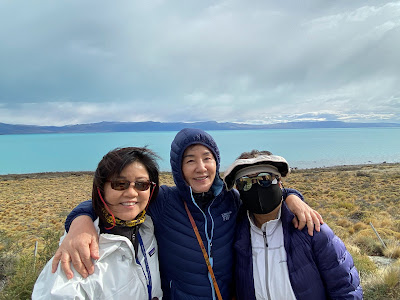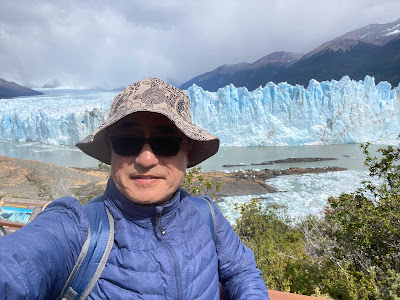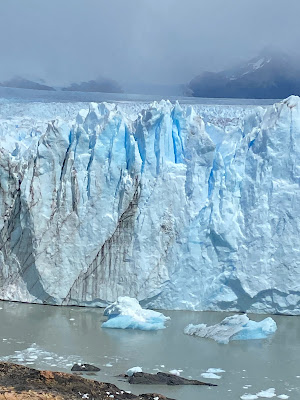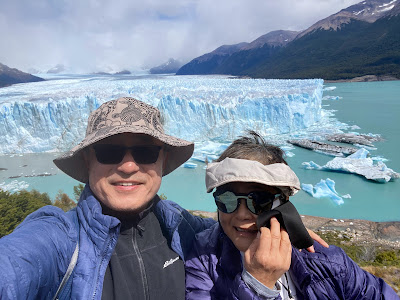After Ushuaia, we took another Aerolineas Argentinas flight for a short while to fly to El Calafate. El Calafate is a type of berry that was common in the area.

The forest region had many sheep farmers and the current El Calafate was a stop for wool traders who carried back supplies to the ranches in the forest. The Calafate brushes were providing protection against a strong wind, blowing in the spring and summer, and the area provided water as well. Thus, a town was established, now El Calafate.
El Calafate is the gateway to Patagonia that consists of five states in Argentina alone. Chile has its own region categorized as Patagonia. But, El Calafate is most famous for the glaciers in the region. Thus, El Calafate is called Tierra de Glaciares or Capital Nacional de los Glaciares.



We checked in at El Calafate Kosten Aike (meaning Wind Place) Hotel. It was located in the middle of town close to shops and restaurants.




We were given some free time and we chose to visit Glaciarium, a Glacier Museum. It was located in the middle of nowhere, but there was a shuttle that runs from the town to the museum.
It was a good learning experience about glaciers and how certain places were named. Patagonia Glacier Camp is the third largest in the world, after Antarctica and Greenland. From above, it looks like this:
There was a lot of useful information including the many shapes of snow as shown below:
Later, we walked around in town and found a few interesting sceneries.
One of the experiences we had was eating Calafate Icecream.
The following day, we were heading out to visit Glacier National Park where Perito Moreno Glacier is located. On the way out of town, we stopped by the El Calafate sign.
At Lago Argentino, we found pink flamengos.
The highlight of our visit to El Calafate is Glacier National Park and the most accessible glacier in the world, Perito Moreno Glaciers. It was named after Perito Moreno, an explorer, who found Lago Argentino. His persona was displayed at Glaciarium.
Perito Moreno Glacier is the third largest glacier after Viedment and Upsala in Argentina. It moves 2 meters a day on the south and 50 cm a day on the north side. We observed a few ice carving activities while we were visiting Perito Moreno Glacier. Perito Moreno Glacier also has a phenomenon called, Glacier Rupture when the south side of the glacier reaches the peninsula. We watched it on a video clip. It was a wonderful phenomenon of nature.
It is impossible to capture the magnificent scenery of this glacier in several photos, but I hope the feeling and sensation may be shared with the readers.
In Patagonia, the wind blows from the west to the east, meaning from the Pacific Ocean to inland South America. The wind drops moisture in Chile, thus very green. As it moves eastward, it climbs over the Andes dropping a lot of snow and forming glaciers over time. As the wind moves further east past the Andes, it drops some moisture in rain on the east side of the Andes, helping form the forest. After the forest, the wind reaches El Calafate without any moisture, thus resulting in the semi-desert steppe climate.
Not too far from El Calafate was El Chalten, a small village where you could climb to see the famous Monte Fitz Roy. Here is a photo borrowed from Google.
Perhaps, I may come back to hike to see Monte Fitz Roy along with the W track in Torres del Paine in Chile, Lord willing. But for now, I was extremely happy and grateful to see the natural wonder that God created in Patagonia. - Jeffrey
































































No comments:
Post a Comment